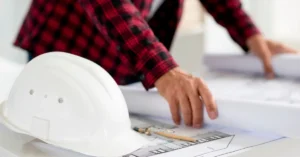
The importance of sustainable urban planning
- Urban planning is one of the most significant trends of our time. According to the United Nations, by 2050, more than two-thirds of the world’s population will live in cities. This rapid urban growth presents a series of complex challenges, including environmental degradation, social inequality, economic disparities, and public health concerns. To address these issues, urban planners and designers need to adopt an innovative and interdisciplinary approach to creating livable, sustainable, and healthy cities for the future.
- The concept of urban planning refers to the process of designing, developing, and managing urban environments, such as cities, towns, and metropolitan areas. It involves a range of disciplines, including architecture, engineering, sociology, economics, public health, and environmental science. The goal of urban planning is to create functional and attractive urban spaces that meet the needs of a diverse and growing population, while also promoting environmental sustainability, social equity, and economic vitality.
- Creating livable cities requires a holistic approach to urban planning that considers the needs of residents, the environment, and the economy. One of the key elements of sustainable urban design is the development of public transportation systems that are efficient, affordable, and accessible. This reduces reliance on private cars, which can contribute to air pollution, traffic congestion, and carbon emissions. The promotion of alternative modes of transportation, such as walking and cycling, can also help to reduce pollution and promote healthy living.
- Another crucial element of urban planning is the creation of green spaces, such as parks, gardens, and urban forests. These areas not only provide recreational opportunities for residents but also help to improve air quality, reduce noise pollution, and mitigate the effects of climate change. Green spaces can also serve as a habitat for local wildlife, contributing to biodiversity and ecosystem health.
- Pedestrian-friendly and bike-friendly infrastructure is also vital in promoting sustainable urban living. This includes the development of sidewalks, bike lanes, and dedicated pedestrian and bike paths. By creating safe and accessible spaces for walking and cycling, urban planners can encourage more people to use these modes of transportation, further reducing the reliance on cars and promoting healthy living.
- Another critical aspect of urban planning is the provision of affordable housing. As cities continue to grow, housing affordability becomes a significant concern for many residents, particularly those on low and moderate incomes. By creating affordable housing options, urban planners can ensure that all residents have access to safe, secure, and comfortable homes. This can also help to reduce social inequality and promote economic growth.
- Smart city technologies also play an increasingly important role in urban planning. Smart cities use technology to improve efficiency, reduce waste, and enhance the quality of life for residents. This includes the use of sensors to monitor air quality, traffic flow, and energy consumption, as well as the development of digital platforms for citizen engagement and participation.
Conclusion
In conclusion, urban planning is a critical tool for creating livable, sustainable, and healthy cities for the future. By adopting an innovative and interdisciplinary approach to urban design, we can address the complex challenges of urbanization and create communities that are environmentally friendly, socially inclusive, and economically prosperous. To achieve this, we need to prioritize the development of public transportation systems, green spaces, pedestrian and bike-friendly infrastructure, affordable housing, and smart city technologies. By incorporating these elements into our urban planning strategies, we can create cities that promote healthy living, social well-being, and economic growth.
However, designing livable cities is not a one-size-fits-all approach. Every city has its unique set of challenges, and urban planners need to take into account the specific needs and priorities of each community. They also need to involve local residents, community organizations, and other stakeholders in the planning process to ensure that their voices are heard and their concerns are addressed.
In addition, urban planning should also prioritize the preservation of cultural heritage and historical landmarks. Cities have a rich cultural history that deserves to be preserved and celebrated. By integrating historic buildings and landmarks into our urban planning strategies, we can create a sense of place and identity that connects people to their community and its past.
Overall, designing livable cities for the future is an ongoing process that requires a long-term vision, interdisciplinary collaboration, and community engagement. By prioritizing sustainability, social equity, and economic vitality, we can create urban environments that meet the needs of current and future generations. Urban planning is not only about designing buildings and infrastructure, but it’s also about creating communities where people can thrive, connect with each other, and contribute to a better world.
For more SketchUp tutorials you can check out https://www.sketchupguru.com/blog/
You can also check more tutorial videos for sketchup on our YouTube Channel,
https://www.youtube.com/c/SketchupGuru
To know about the Top Online 3D Rendering Courses for 2022 click,













